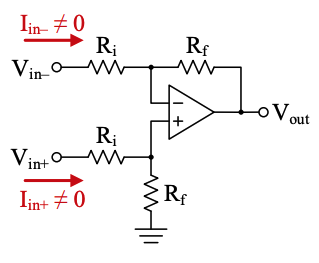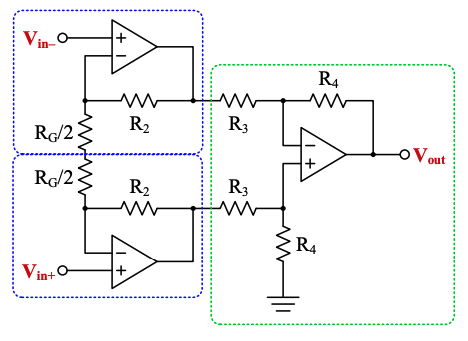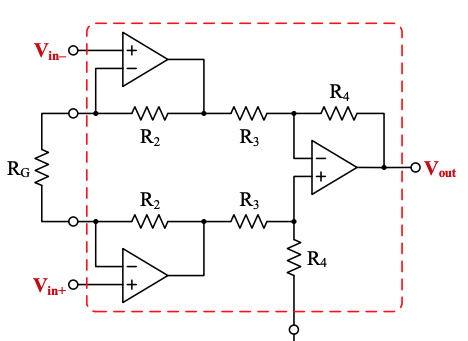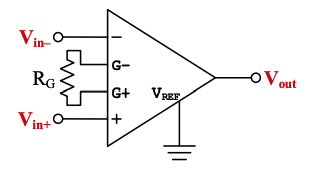Basic op-amp circuits suffer from two significant drawbacks when configured as difference amplifiers.
- First, the difference amplifier requires current on both its input terminals. However, many sensors cannot deliver current and must be connected to high-impedance amplifier inputs. Though modern op-amps usually require minimal input current, the difference amplifier circuit relies on a current balance in the feedback path on the negative input and a voltage divider on the positive input. -
- Secondly, mismatches in the and resistors coupled with the op-amp’s own CMRR can quickly lead to an unacceptable overall CMRR.

Instrumentation Amplifiers
An instrumentation amplifier solves these problems by buffering the input signals and using well-matched resistors.

Stage 1 (blue) consists of two non-inverting op-amp configurations whose primary purpose is to to buffer the input.
- is a single resistor intended to set the gain, whereas all the other resistors are fixed values. is divided in half to help visualize Stage 1 as a non-inverting configuration. The node between the two halves of acts as a virtual ground when a differential signal is applied since the upper and lower Stage 1 amplifiers move symmetrically about that voltage. Visualize the fulcrum in a seesaw – the voltage should remain constant.
Stage 2 (green) is simply a difference amplifier.
The gain is:
If , then the gain simplifies to:
If deviates from its intended value through component tolerance, drift, or sensitivity to operating conditions, the positive and negative gains are symmetrically impacted. So, though changes due to errors in , will not, leading to a far better CMRR than using separate Stage 1 gain resistors.

In integrated circuit (IC) form, the boundary would be shown in red. would be user-supplied, and , and would be exposed terminals. The voltage divider ground terminal would also be exposed as , which can set the DC offset of the output signal. the symbol for an instrumentation amplifiers is sometimes drawn as shown.
